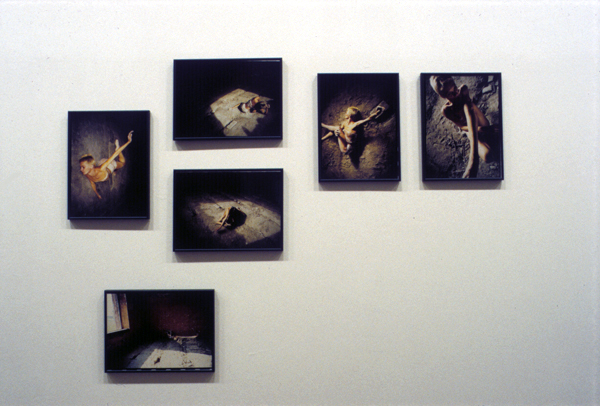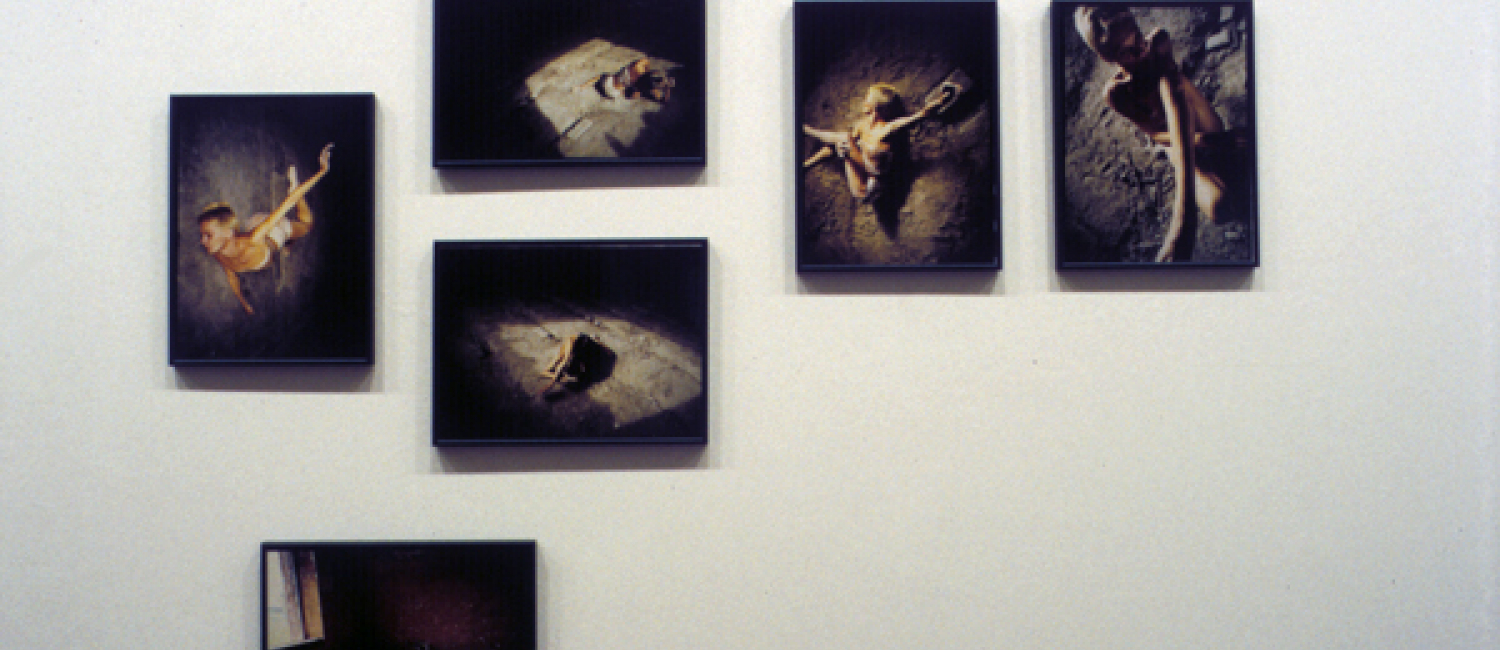After his photography exhibit Danaides in 1995 (Ernst Museum), Ferenc Grunwalsky (b. 1943, Budapest), director and photographer of several outstanding Hungarian films (Requiem for a Revolutionary, Light Physical Injuries, Wall-Driller, Junk Movie, The Lord's Lamp in Budapest, Returning), will introduce his movement-photo-motion picture project entitled Body-Space in the lobby of the Ludwig Museum. Every Friday during the one month of the exhibit the dancer Andrea Ladányi, subject of the Grunwalsky's photos, will bring to life, and thus authenticate the scenes photographed. Grunwalsky tries to see if photographs can capture the spatial dimensions of the body in a similar way as a sculpture. While the female nudes of the Danaides can be understood as illustrations following the traditional technical compositions of photography, the works in Body-Space communicate the powerful spatial organisation of the human body. "These series of movements are in themselves very difficult physically and can only be performed with exceptional spiritual and physical acrobatic capacity." (Grunwalsky) The material of the exhibition serves as proof that the body not only gives way to meaning, but also creates its own space. The meanings and spaces produced are contained in such an abstract a realm that only the poet can attempt their interpretation:
"... the soul says to the body I have been through all your passages hallways crevices from your hair to the nails on your feet enveloped you with me now fly... limbs contorted as if the racks of the Inquisition had contorted them or delirious ecstasy... look now spider now moth now octopus" (Ottó Orbán: "Round-dance")
Andrea Ladányi, started off her career in 1981 with the Győr Ballet Company, had already won the Dancer of the Year Award in 1985, and later cultivated her talents in North America and Finland. On Grunwalsky's pictures she performs her series of movements in a deliberately simple background setting. In this way, the dancer does not portray a separate story. She herself - the uncovered, but not naked, body - creates the Here and the Now. Grunwalsky does not exhibit his material in the usual way, but makes it a part of a unique installation: he gives a new spatial meaning to the Novecento-style lobby of the Ludwig Museum. The enormous marble staircase will become the foundation of the staircase designed by Márton Ágh, while the work depicted on the invitation appears on three monumental canvases behind the "dublestairs", thus connecting the levels above one another.

